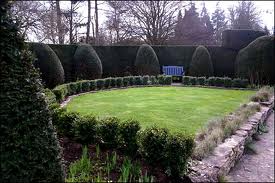Latest Posts
- Have a purpose when backyardingAugust 5 2021
- Study: Time outside alters our microbiomeAugust 4 2021
- Happy National Mutt Day from Mo-MoJuly 27 2021
- New home? Avoid these common mistakes in your yard.July 26 2021
- Infographic: Plan a backyard staycation this summerJuly 22 2021
Categories
Archive
March 11th
How your lawn helps you, even when you sleep
You may think your backyard is only good for BBQs and giving your kids and pets a place to play. But did you know that even when you’re sleeping you’re still using your lawn?
Here’s how your lawn keeps working for you 24-7, even when you’re sawing logs.

Cools down your home & community.
Because of concrete, asphalt and buildings, air temperatures in cities – even after the sun goes down – can be as much as 22°F warmer than nearby areas. This phenomenon is known as the heat island effect, just ask Heat Freak! Grasses – like those found in your lawn and characterized by TurfMutt’s pal Green Ranger – dissipate radiant heat through a process called evapotranspiration that cools the air.
Combats global warming by sequestering carbon.
Turfgrass is the largest carbon sink in the country, telling Carbon Creep to take a hike. Grasses remove about 6 tons of carbon dioxide per acre per year from the atmosphere. You can help your yard trap even more carbon by leaving grass clippings on your lawn.
Makes oxygen & cleans the air.
Your lawn is an oxygen-producing machine! A turf area of 50 square feet will produce enough oxygen to meet the daily needs of a family of four. Also, research has shown that turfgrasses remove atmospheric pollutants such as carbon dioxide, ozone, hydrogen fluoride, and perosyzacetyle nitrate from the air. Grass also plays a vital role in capturing dust, smoke particles and other harmful pollutants.
Controls water runoff & erosion.
Your lawn functions as a sponge to trap water and prevent it from “running off” into area sewer drains carrying trash, oil and dirt with it. It also prevents flooding and soil erosion. Your spongy lawn cleanses the water it collects and breaks down harmful microbes and pollutants, keeping them out of the groundwater supply.
Serves as a fire break.
Living grass is the best natural fire break. Green grass slows the spread of wildfires because of its low fuel value. Your lawn also provides a defendable space around structures where firefighters can work effectively.
Reduces noise pollution.
Grass cuts down on excessive noise. It’s a growing problem in urban areas, where hardscape and pavement reverberate sound. In fact, grass slopes alongside lowered expressways reduce noise 8-10 decibels.
To get more information and tips on maintaining your lawn and other living landscapes, even under drought conditions, click here.





